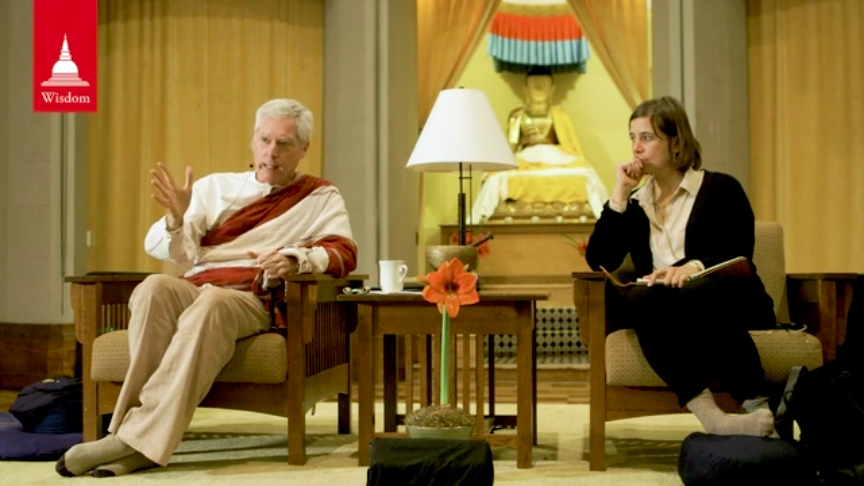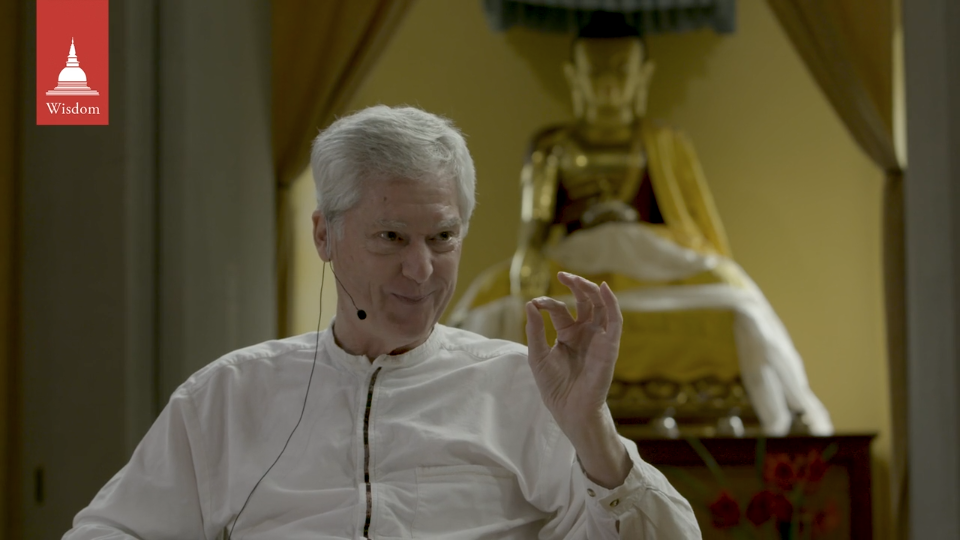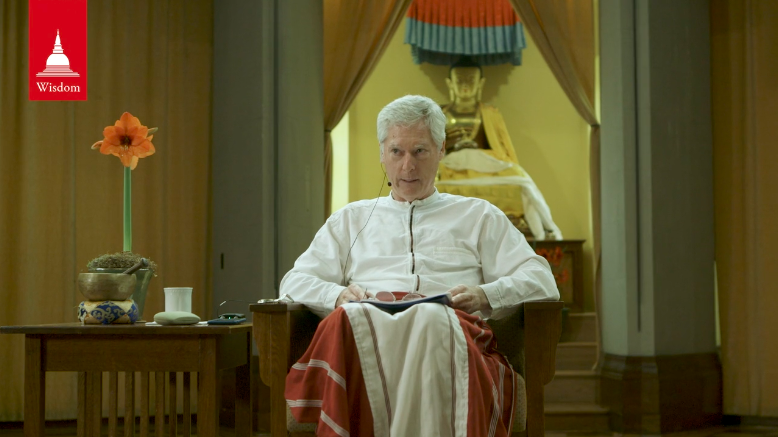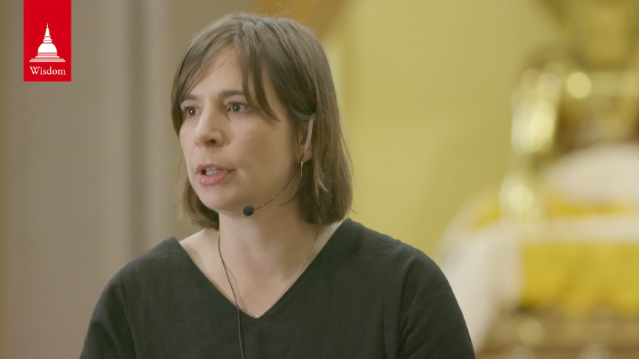We’ll begin this session highlighting the conative, the desire, the motivation, the aspiration behind our being here this morning and venturing into this practice. I invite you to explicitly arouse a sense of caring, a sense of affection, of kindness for yourself and for all those around you. With such a motivation let’s engage in this practice to bring about greater wellbeing for ourselves and others, to alleviate suffering and its causes.
And with this motivation, I invite you then to let your awareness drop, descend. If you normally feel you’re located up in your head, you’re looking out from behind your eyes, let the locus of your awareness descend right to the ground. If you’re seated on a chair, descend to the tactile sensations of your buttocks, your thighs against the chair, your feet on the floor. If you’re sitting cross-legged, descend. Do these tactile sensations of solidity, of firmness, where your body is in contact with the ground. We call this the earth element.
Let your awareness slip into, or relax into a state of simple witnessing, a quiet awareness, attending immediately to what is given, the sensations of this earth element, of solidity, and firmness of your body in contact with the ground.
Without visualizing your body or anything else, without thinking about, without commentary, simply being present. You’re literally grounding your awareness in the here and now, your sensations of being embodied, your contact with the earth.
Then like a fragrance filling a room, filling a space, let your awareness fill the space of the body, the somatic field, from the soles of your feet to the crown of your head. Be mindfully present throughout the entire somatic field.
Be aware of the space of the body and this whole range of tactile sensations of feelings, pleasant, unpleasant, neutral, that arise throughout this field.
And while being so present, so mindfully attentive, take special note of any sensations within this space that indicate tension, constriction, tightening, and as you breathe out, release, relax, more and more deeply with every exhalation. Bring your awareness to the face without visualizing the face. Just be present there in terms of the tactile sensations, and very deliberately soften the muscles of the jaws. Let there be a spaciousness in your experience of the forehead and openness between the eyebrows, relaxing all the muscles around the eyes and softening the eyes themselves.
In short, set your body at ease, relaxed, comfortable, loose.
And insofar as you are indeed comfortable, you should find it quite easy for the short duration of this session, to remain quite still with no unnecessary fidgeting, movement, scratching. Let your body be still. And assume a posture of vigilance, whether you’re sitting up on a chair or cross-legged. Let your spine be straight. Very gently, subtly lift the sternum, keeping the abdominal muscles loose and relaxed, so that when you breathe in, the sensations of the respiration flow all the way down to the belly, which expands as you inhale and contracts as you exhale.
So we breathe as if filling a pot with water, filling from the bottom up. So even if the breath is very shallow, you feel the belly expand as you inhale, contract as you exhale. If the breath is deeper, first the belly, then the diaphragm expands. If it’s quite deep, first of belly, then the diaphragm, and finally the chest expands with each inhalation.
So in this way we settle the body in a state of ease, stillness, and vigilance.
Then we take on the subtler challenge of settling the speech in its natural state, which is one of effortless silence, which of course is quite easy, easy in terms of our public speech that we voice. But there’s the subtler speech of the mind, the internal commentary, that chitchat, the ongoing flow of discursive thoughts. And here we may find it more challenging to settle the voice of the mind, the internal commentary, into its natural state of effortless silence, inner quiet. To facilitate this inner ground state of the voice of the mind, we settle the respiration in its natural rhythm, which means to simply allow the respiration to flow in and out effortlessly and unimpededly.
Breathing egolessly, relinquishing all control, and simply allowing the body to breathe without intervention. We seek to approximate the flow of the respiration that occurs when we’re in deep dreamless sleep, which is the time when the body becomes revitalized, balanced, refreshed. Let us emulate this natural flow of the respiration while awake and clearly mindful.
To facilitate this, we focus on the out-breath, on each exhalation. Let’s take advantage of every out-breath as it occurs, to relax more and more deeply in the body. Surrendering your muscles to gravity, relaxing, softening, breath-by-breath.
With every out-breath, release and release and release, until you’ve allowed the breath to flow out completely, holding nothing in reserve, fearlessly, breathing out to the very end, holding nothing back, but neither do we force the breath out. Just allow it to flow until it’s all flowed out.
Especially as you come to the very end of the breath, let your mind be very quiet and attentive, releasing, releasing.
And once you breathe out fully, there may be a pause before the next breath flows in. Just relax and allow, simply allow the next breath to flow in of its own accord without pulling it in, without impeding it, letting the breath flow in as effortlessly as a wave washing up on shore. And whether that breath is deep or shallow, short or long, let it be. And with every out-breath, as you relax the body and release the breath, also release any thoughts, memories, images that may have come to mind as you breathe out, as if you were watching leaves blown away gently by a gust of breeze. Breathe out these thoughts and let them disappear, float away, and vanish in the space of the mind.
And then we turn to the subtlest challenge and that is settling the mind in its natural state. And for this, our first challenge is, indeed, to set the mind at ease, to allow ourselves the leisure, the freedom, during the short duration of this session to release all our concerns about the past and the future, set aside just for the moment all of our hopes and fears, and allow the awareness simply to come to rest with the mind at ease, carefree. Let your awareness come to rest in stillness in the present moment.
Let your awareness simply come to rest without directing it outwards or inwards, without being caught up in any thoughts, memories, fantasies, let it come to rest in an utter simplicity of simple mindful presence, in which the mind is relaxed, awareness is still, and it’s naturally bright and clear, wakeful. Thoughts, memories will, of course, continue to come and go, like clouds appearing in the sky and vanishing back into the sky. But as these activities, these movements of the mind come and go, to the best of your ability remain still, let your body be still, your awareness be still, in the midst of the comings and goings of the mind.
And in this way we settle the mind in its natural state, relaxed, still, and clear.





